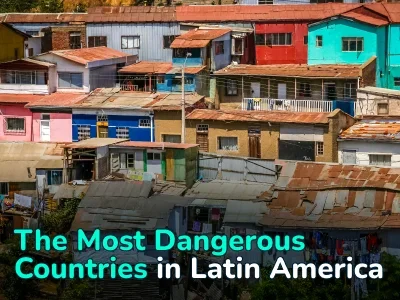
Top 10 Wealthiest Countries in 2025: GDP per Capita Ranking
In the modern world, the list of the top richest countries in the world is no longer determined by the size of their treasury or the amount of gold they hold. Moreover, even researchers themselves are not entirely sure how to calculate it, introducing numerous economic terms and variations that are easy to get lost in. In economic rankings, countries are mainly ranked by GDP, yet this figure does not always reflect the standard of living of their citizens.
To address this, in addition to nominal GDP, experts use GDP per capita adjusted for Purchasing Power Parity (PPP). This indicator shows how many goods and services a country’s residents can buy, taking into account local prices. In 2025, the richest countries in the world list includes both small financial hubs such as Luxembourg and large economies like the United States.
We have compiled the ranking based on data from the International Monetary Fund (IMF) and the World Bank, and will explain how these lists are formed and why some countries take the lead while others lag behind.
How is a Country’s Wealth Determined?
As mentioned earlier, the main indicator is GDP per capita based on PPP. This metric is used because nominal GDP measures a country’s economy at current market prices without accounting for differences in the cost of living. For example, the U.S. economy, with a nominal GDP of about $28 trillion in 2025, is the largest in the world, but due to its large population (around 340 million), its GDP per capita amounts to about $89,680 — lower than Luxembourg’s $154,910.
GDP based on PPP, on the other hand, adjusts data to reflect the purchasing power of each country’s currency. For instance, a cup of coffee in the U.S. may cost $5, while in India it might be the equivalent of $1. PPP offsets this difference, making it possible to compare countries with the highest standard of living. The only major drawback of this indicator is that it does not account for income inequality.
Ranking of the Top 10 Richest Countries in the World in 2025
The first place may come as a surprise in terms of the richest economies in the world, but size is not always the decisive factor. According to IMF forecasts, by the end of the year, Luxembourg will take the top spot, and it has everything needed for this: a small population and enormous investment potential.
Top 10 richest countries in the world in 2025:
|
Rank |
Country |
GDP per capita ($, PPP) |
|
1 |
Luxembourg |
~152,915 |
|
2 |
Singapore |
~156,755 |
|
3 |
Macao (China) |
~140,250 |
|
4 |
Ireland |
~131,550 |
|
5 |
Qatar |
~121,605 |
|
6 |
Norway |
~107,892 |
|
7 |
Switzerland |
~98,140 |
|
8 |
Brunei |
~95,040 |
|
9 |
Guyana |
~91,380 |
|
10 |
United States |
~89,680 |
Why are These Countries at the Top?
Singapore ranks second for two main reasons. First is the advantageous geographical location at the crossroads of major trade routes. It’s no coincidence that the Port of Singapore is among the largest in the world. The second key factor is its technology sector: Singapore is home to major semiconductor production and large global tech corporations.
Macao (China) thrives thanks to its gambling industry, which generates billions of dollars annually. In this sense, the region is similar to Monaco, but the latter did not make the list, partly due to a decline in popularity and excessively high real estate prices.
The financial prosperity of countries such as Qatar, Brunei, and Guyana is built on abundant natural resources, most often oil and gas. However, as practice shows, relying solely on them is risky. That’s why Norway and the United States have diversified their economies, developing not only resource extraction but also technology and manufacturing sectors.
Switzerland’s situation resembles Luxembourg’s: a powerful banking sector and direct capital inflows are spread across a relatively small population. The main difference is that Switzerland has a strong manufacturing industry, which is why the world knows about Swiss cheese, chocolate, and watches.
Ireland stands apart in the list of richest countries by GDP per capita due to its low corporate tax rates, especially for IT companies. Naturally, no one wants to pay more than necessary — especially corporations with huge cash flows — so companies like Apple and Google have placed their European headquarters in Dublin.
The Richest Countries in the World Ranking by Region
We have already looked at the world’s richest countries overall, but it is also worth seeing which nations follow closely behind within their own regions. These countries may not make the global top 10, but they are far from poor.
The Richest Countries in Europe 2025
Luxembourg and Norway are in the global top 10, but their cases are different: Luxembourg is small and, aside from financial inflows, has limited resources, while Norway is a Northern European nation — countries from this region often appear in various prosperity rankings. Looking at Central Europe specifically, the three wealthiest countries by GDP per capita are:
- Denmark (~$88,934 per capita). Ranked 11th in the world by PPP GDP. Its economy is based on wind turbine manufacturing, pharmaceuticals (Novo Nordisk), and agricultural exports (pork, dairy products).
- Netherlands (~$84,566). Ranked 12th globally. The Dutch economy is built on agriculture (export of flowers and food products), logistics (Port of Rotterdam), and technology (ASML — the global leader in semiconductor manufacturing equipment). Lithography machines produced here are used to make the majority of the world’s processors.
- Austria (~$74,372). Ranked 21st globally. Its economic strength relies less on tourism revenue and more on mechanical engineering and the chemical industry.
The Richest Countries in Asia 2025
Asia is home to many nations with vast reserves of natural resources, yet most strive to diversify their economies not only through tourism development but also by investing in technology:
- United Arab Emirates (UAE) (~$81,676). Ranked 15th globally. Oil and gas account for about 30% of GDP, but the country is actively diversifying into tourism (Dubai), finance, and renewable energy (projects in Abu Dhabi).
- Hong Kong (China) (~$77,942). Ranked 17th in the world, Hong Kong is Asia’s financial hub. Its low-tax, free-trade policies attract multinational corporations and those seeking tax havens.
- Taiwan (~$84,082). Ranked 13th globally. Taiwan is a leader in semiconductor production (TSMC accounts for around 50% of the global chip market). Electronics and technology exports form the backbone of its economy.
The Richest Countries in North and South America 2025
The United States leads the region by a wide margin, which places most other nations in the Americas below the global median in GDP per capita rankings. The most notable among them are:
- Canada (~$65,707). The closest competitor to the U.S., ranked 27th globally. Canada’s economy relies heavily on natural resources.
- Bahamas (~$38,829). Tourism accounts for up to 60% of GDP, with services and finance sharing the remaining 40%, placing the Bahamas at 70th globally.
- Chile (~$35,146). Although ranked 65th worldwide, Chile is South America’s leader in copper mining and agricultural exports. The country produces up to 30% of the global copper supply.
Alternative Wealth Rankings
We have mentioned nominal GDP but have not yet looked at which countries lead by this metric. It measures the total size of an economy in U.S. dollars without dividing the sum by the number of residents. This is the figure used when assessing a country’s contribution to the global economy.
Wealthiest countries in the world by nominal GDP:
- United States — $30.5 trillion.
- China — $19.2 trillion.
- Germany — $4.74 trillion.
- Japan — $4.19 trillion.
- India — $4.10 trillion.
Another measure is the Human Development Index (HDI), calculated not by the IMF but by the United Nations Development Programme (UNDP). It takes into account not only income but also life expectancy, access to education, and healthcare.
Most developed countries in the world, according to HDI in 2025:
|
Rank |
Country |
HDI Value |
|
1 |
Iceland |
0.972 |
|
2 |
Switzerland |
0.970 |
|
2 |
Norway |
0.970 |
|
4 |
Denmark |
0.962 |
|
5 |
Germany |
0.959 |
The HDI reflects how countries use their wealth. For example, Norway and Switzerland appear both in the top 10 for GDP (PPP) and in HDI rankings. By contrast, Qatar — despite its high GDP — ranks lower on HDI due to inequality and limited access to education.
Perhaps the most subjective measure of a country’s standing is the World Happiness Report, which assesses citizens’ subjective well-being, their sense of freedom, and trust in government. This ranking reflects where people feel the most satisfied with their lives.
Richest countries per person happiness report in 2025:
|
Rank |
Country |
Life Evaluation Score |
|
1 |
Finland |
7.736 |
|
2 |
Denmark |
7.583 |
|
3 |
Iceland |
7.525 |
|
4 |
Sweden |
7.344 |
IMF data on global GDP show that rankings can shift due to economic and geopolitical factors. For example, Guyana is expected to continue its growth thanks to an oil boom, yet global challenges — such as changes in energy prices or climate policy initiatives — could easily alter the situation.
Frequently Asked Questions
What is the richest country in the world in 2025?
The richest countries in the world in 2025 are determined by GDP per capita adjusted for Purchasing Power Parity (PPP), which reflects citizens’ standard of living. According to the International Monetary Fund (IMF) forecast from April 2025, the top 10 richest countries include:
Singapore (~$156,755): a global trade and financial hub with low taxes.
- Luxembourg (~$152,915): a major financial center.
- Macao (China) (~$134,042): thrives on gambling and tourism.
- Ireland (~$134,000): low taxes attract IT giants.
- Qatar (~$121,605): a leader in natural gas exports.
- Norway (~$107,892): oil and gas revenues plus manufacturing.
- Switzerland (~$97,581): banking, pharmaceuticals, and tourism.
- Brunei (~$95,758): oil and gas, small population.
- Guyana (~$94,258): rapid growth from new oil fields.
- United States (~$89,105): the world’s largest economy with diversified income sources.
How is a country’s wealth measured?
A country’s wealth is most often measured through Gross Domestic Product (GDP) — the total value of goods and services produced in a year. However, for comparing living standards between countries, GDP per capita based on Purchasing Power Parity (PPP) is used. Here’s how it works:
- Nominal GDP. Calculated at current prices in U.S. dollars. For example, the U.S. nominal GDP in 2025 is around $30 trillion, but it does not account for differences in cost of living.
- GDP (PPP). Adjusts nominal GDP to reflect the purchasing power of each country’s currency, showing how many goods and services can be bought for the same amount in different countries.
- GDP per capita. Divides total GDP by the population, showing average income per person. For instance, Luxembourg (660,000 people) has a GDP (PPP) per capita of ~$152,915, while China (1.4 billion people) has ~$26,925.
What is GDP per capita?
GDP per capita is an economic metric that measures the average economic output per person in a country. It is calculated by dividing Gross Domestic Product (GDP) by the population. For example, if a country’s GDP is $100 billion and its population is 10 million, GDP per capita equals $10,000.
The main difference between GDP per capita vs GDP PPP is in role. GDP per capita based on PPP is used, as it accounts for differences in the cost of living. This allows for a fairer comparison of how many goods and services can be purchased for the same amount in different countries. For example, in 2025, Singapore’s GDP (PPP) per capita ($156,755) is higher than that of the United States ($89,105), even though the U.S. has a much larger total GDP.
Author
I write informative articles about real estate, investments, job opportunities, taxes, etc.




















